Main menu
Low stress stockmanship - economie and advantages
Stockmanship is the most intelligent handling with grazing animals. Stockmanship is the promise that I give to the animals. I promise not to scare them or otherwise to threaten others. I give the animals time they need. In return I get from the animals a peaceful, cooperative partnership and they do what I ask for. Stockmanship simplifies all works with the animals: the rotational grazing, the roundup in the corral, sorting, selling of the shipping. To be clear: stockmanship has nothing to do with sticks in terms of bludgeon! (I have also been asked sometimes...). There is no German word for it.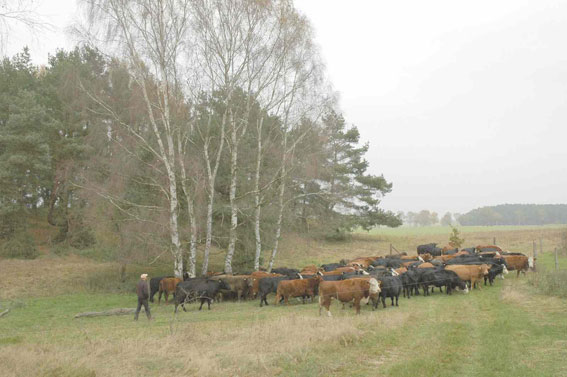
- stock - these are farm animals, the livestock
- Man - Human
- ship - "community" as in friend "community"
Low-stress stockmanship has been done with cattle, sheep, goats, deer, reindeers, camels ... Stockmanship is a simple technique to deal with herd animals. Anyone can learn it.
This is all well and good, but I want to earn money with my animals!
Figure: Even big herd with just one person is not a problem. LSS makes it possible.
This is the most popular objection. And it is certainly not easy to earn money with cattle. The most important thing is that the animals eat the good food and digest. Stress leads to digestive problems and reduced nutrient utilization. In addition, the digestive tract is extremely important for the body's immune system. When the animal is stressed, the nutrient absorption decreases, the digestion will be disturbed and it increases the susceptibility to disease. - How do you want to earn money under such conditions? Did you know that the stress hormone adrenalin not only blocks pain receptors, but also reduces the effectiveness of your antibiotics or your anthelmintic? The effect of your expensive medications decreases resulting to the stress!
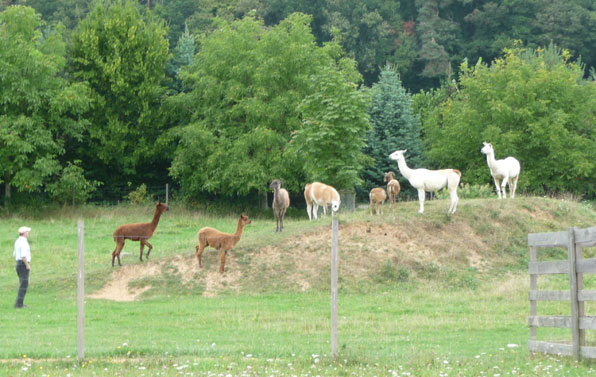 Bud Williams told once, that was important to him, was that he could handle the animals with less stress than others. He could do it even faster than the conventional method, which was a nice side effect.
Bud Williams told once, that was important to him, was that he could handle the animals with less stress than others. He could do it even faster than the conventional method, which was a nice side effect.
The person, who says he has no time to argue for low-stress stockmanship, is like someone who says he has no time to learn to drive; he just had to go somewhere fast. Of course it takes time to learn something, but in longer term it is faster by car than by foot ... And the performance and health of animals increase while the danger and the stress for humans and animals decrease, so it is something.
Where does stockmanship come from?
Figure: Low-stress stockmanship works for almost all herd animals, not only cattle.
Stockmanship comes from the U.S. and was developed by Bud Williams alone. Raised in Oregon in the 1930s, he heard the stories of old men, how large herd were formerly kept on open prairie or on the mountains, how animals stayed together in the herd, without having to disperse on large areas and drift easily to new feedyards. Bud Williams worked later for various ranches and was known as "Crazy Bud", because he could do almost incredible things with the animals. Later he was asked how he does it and if he could even teach it. As a result, he developed courses in which he gave his knowledge. He gave courses in the USA, Canada, Australia, New Zealand and Mexico.
What helps me with my animals?
It helps in all circumstances to deal with animals. Here are three examples of how they have experienced in any similar or even same ways.
Even with a close corral, the cattle are not easily ruffled. The animals rely on humans and let them do with it.
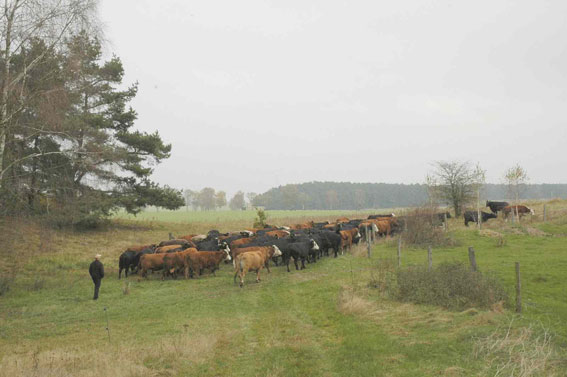 Example 1: Start a herd. People should start a herd of 50 cows to bleed them or to do anything. The corral is built. Five men march up, equipped with electrical strips, which make a tension between them and try to drive the animals to the corral. It goes reasonably during the first half of the way. Then the animals go, not toward the corral, but parallel to the electric strip and run at full gallop to the other end of the pasture. If all the animals are caught, the animals are sweaty and breathless; they fight between each other and are generally in a state of agitation.
Example 1: Start a herd. People should start a herd of 50 cows to bleed them or to do anything. The corral is built. Five men march up, equipped with electrical strips, which make a tension between them and try to drive the animals to the corral. It goes reasonably during the first half of the way. Then the animals go, not toward the corral, but parallel to the electric strip and run at full gallop to the other end of the pasture. If all the animals are caught, the animals are sweaty and breathless; they fight between each other and are generally in a state of agitation.
Example 2: To catch a single cow. A cow has to be brought from the winter site to the nearby cot, to be examined there. The manager and an employee have provided a driving car near the fence and try to tow the cow with two all-terrain vehicles in the carriage. Her newborn calf is placed in the carriage, so the cow goes to him. She snuffles from the outside through the rods of the carriage with big and panic eyes and moos nervously. The cautious try, to tow her one meter at the corner of her calf, ends with a fugitive cow and another hunt. Lastly, the cow is completely exhausted in the carriage. Another cow escaped therefore away the wild fun over the fence and must also be brought back.
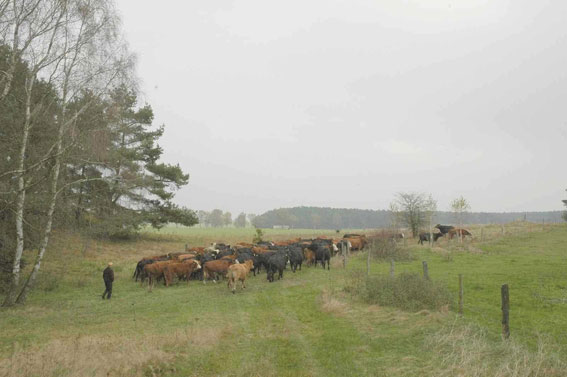 Example 3: To drive a herd in a corral. Every available employee joins us. There is a whole crop of 1.5m long stable sticks ready in the barn, which is strong and easy to handle. In a broad front people bear down on animals. The animals run along the driving way, before the men. The animals went quickly in the corral, but they came so quickly out of it. You are looking for an exit. The men beat with sticks on the ground, they have respect. An employee has been seriously hurt with a similar action.
Example 3: To drive a herd in a corral. Every available employee joins us. There is a whole crop of 1.5m long stable sticks ready in the barn, which is strong and easy to handle. In a broad front people bear down on animals. The animals run along the driving way, before the men. The animals went quickly in the corral, but they came so quickly out of it. You are looking for an exit. The men beat with sticks on the ground, they have respect. An employee has been seriously hurt with a similar action.
Would it not be nice if you could run all this work alone or with only one employee in peace and serenity with quiet and peaceful animals?
Are there any requirements?
Yes, the people! You have to be ready, to learn something new. Unfortunately, it seems that we move intuitively wrong towards the animals. But we can learn to understand how the animals feel and change our behavior appropriately. In addition, there are no requirements. It's unbelievable what animals can do everything for us, when they do not fear us. It does not matter whether you: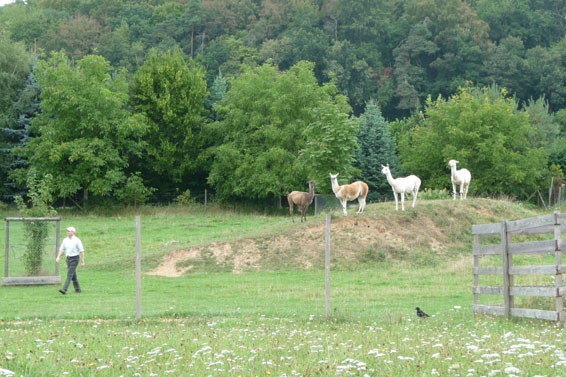
- work with one or 200 animals, we will always apply the same methods
- have a solid pen or simple electric fences
- want to work with your animals in summer or in winter.
What is Stockmanship?
Stockmanship is the most intelligent handling with grazing animals. Stockmanship is the promise that I give to the animals. I promise not to scare them or otherwise to threaten others. I give the animals time they need. In return I get from the animals a peaceful, cooperative partnership and they do what I ask for...